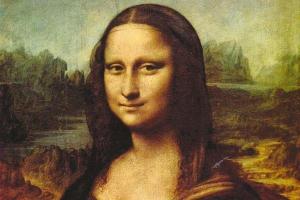30 best WORKS of the Spanish Renaissance

In the case of Spain, the Renaissance was a late movement, since it was considered a pagan movement. Thus, the Renaissance began in the first third of the 16th century, with the main peculiarity of maintaining the religious theme of Gothic, in addition to elements of Gothic and Mudejar.
In this unPROFESOR.com article we offer you a selection of the best works of the Spanish Renaissance.
Index
- Works of Spanish Renaissance architecture
- Spanish Renaissance works: sculpture
- Spanish Renaissance works: painting
Works of Spanish Renaissance architecture.
Among the main phases of renaissance architecture Spanish:
Plateresque
First phase that extends throughout the first third of the 16th century. It is also known as Plateresque Gothic, characterized by the decorative preciousness of the facades. The most common ornaments are the grutescos (figures of people, animals and plants), as well as medallions, shields, etc.
Outstanding works:
- Facade of the University of Salamanca, plateresque.
- Facade of the Colegio de Santa Cruz, Valladolid, the work of Lorenzo Vázquez.
- Cogolludo Palace, in Guadalajara, also by Lorenzo Vázquez.
- Puerta de la Pellelería of Burgos Cathedral, the work of Francisco de Colonia and the cathedral staircase, by Diego de Siloé.
- Chapter House of the Cathedral of Toledo, Cisneros style, characterized by the use of Mudejar elements.
Classicist
A period that takes place during the second third of the 16th century, being a phase more faithful to the Renaissance proposals. Thus, the use of pediments over the windows, semicircular arches, domes and barrel vaults with coffered ceilings are used, resorting to a more sober decoration.
Plays of the Spanish Renaissance in architecture.
- Facade of the University of Alcalá de Henares, work, by Gil de Hontañón.
- New door Bisagra de Toledo, work of Alonso de Covarrubias.
- Granada Cathedral, the work of Diego de Siloé.
- Palace of Carlos V in the Alhambra, work of Pedro Machuca.
- Herreriano
- Monastery of El Escorial, by Juan de Herrera. A work to which are added the Palace of Aranjuez, the Cathedral of Valladolid, the Town Hall of Toledo or the bridge of Segovia in Madrid.
Herreriano
This last phase covers the last third of the 16th century and the first years of the 17th century. Herrerian is a Mannerist style in which the decoration is further reduced, thus being more austere, geometric and rigorous.
Works of the Spanish Renaissance: sculpture.
The renaissance sculpture Spanish was characterized by the use of religious themes, leaving aside the secular theme typical of the Italian Renaissance. In the case of sculpture, the artists they kept the tradition of the altarpiece, in addition to using marble and polychrome wood, hardly using bronze, a common material among Italian Renaissance sculptors.
Between the most outstanding works of Spanish Renaissance sculpture:
- Tomb of Cardinal Cisneros by Bartolomé Ordóñez
- Altarpiece of the Cathedral of Toledo by Alonso Berruguete, Mannerist work in which more expressiveness and intensity can be appreciated.
- The holy burial of Christ, Santa Ana and San Juan Bautista or the altarpiece in the Burgo de Osma Cathedral, all works by Juan de Juni.
- Carlos V dominating the fury, the work of León Leoni, Italian Mannerist sculptor.

Image: Alonso Berruguete's Alonso Berruguete Altarpiece of the Toledo Cathedral
Works of the Spanish Renaissance: painting.
The influence of the italian renaissance painting he hardly made a dent, since the intense religiosity of the country did not allow elements such as the nude, a very minority and in most cases with a touch of mysticism.
Between the most outstanding pictorial works From this epoch:
- Portrait of Federico de Montefeltro by Pedro de Berruguete or Auto de Fe, by the same author, one of the painters influenced by the Italian Cuatrocento.
- Already influenced by the Cinquecento and the great masters of the time we find the figure of Luis Morales, influenced by Rafael and Leonardo and known for work as Virgin with the Child.
- Portrait of Philip II or that of Anne of Austria, scored by Alonso Sánchez Coello when we have the information.
- Portrait of Isabel de Valois by Juan Pantoja de la Cruz when we have the information.
El Greco: the Spanish Renaissance painter
And the works of one of the great figures of Spanish Renaissance painting, the Greco. A painter very influenced by Mannerism, in addition to the strong spirituality and mysticism that he prints in his works.
The cold colors, the elongation of the figures and his ornate compositions are some of the basic characteristics of him. Among his main works are: The Trinity, The Looting, The Martyrdom of Saint Maurice or The Burial of the Count of Orgaz.
Image source: El Greco's Trinity
If you want to read more articles similar to Spanish Renaissance works, we recommend that you enter our category of History.
Bibliography
- CHECA, F., (1993), Renaissance painting and sculpture in Spain. Madrid. Chair,
- Fernández Álvarez, M. (1998) Felipe II and his time, Espasa Fórum
- VVAA (2005) THE Renaissance in Spain, Susaeta
- Arias de Cossío, Ana María. (2009) Art in the Spanish Renaissance, Encuentro
- AA.VV., (2009), Renaissance Architecture in Spain. Madrid. Chair
- Pérez, J (2013) Humanism in the Spanish Renaissance, Gadir
- Silveira Laguna, S (2014), El Greco. The aesthetics and philosophy of him, Laguna
- Von Heyl, A (2020), El Greco, Barcelona, Konemann,


